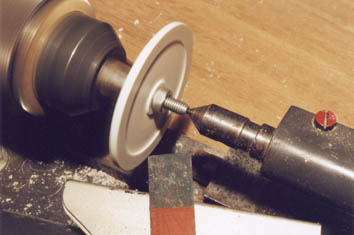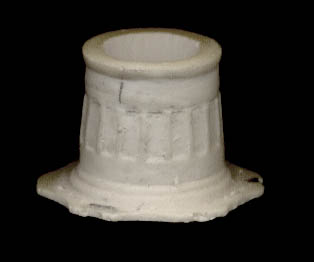
COLD SWEAT
January 13 2000, I connect to Starship Modeler website, interesting source of information for the 2001 vehicles. And there, a big surprise to find a completely different dimension from those published until now: 324 feet! I reverify all my documents, I do not manage to determine the reliable final dimension, the most similar to the 324 feet version being 390 feet, which would make my model a 1/72 scale version. The summary of calculations is following:
Dimension | According to | |||
| 393 ft | Various photos measurement | |||
| 528 ft | Lunar Models model | |||
| 698 ft | 2001: A Space Odyssey novel | |||
| 300 ft | Ecran Fantastique # 55 | |||
| 590 ft | Science & Vie of october 1968 | |||
| 541 ft | 54 feet model deductions | |||
| 324 ft | Starship Modeler website | |||
| 390 ft | New measurements on photos and drawings |
I then ask Rob Caswell, Starship Modeler co-editor, from which comes this information. The reasoning which made it possible to arrive at this dimension was brought to him by the " Captain Cardboard " Scott Alexander, producer of a splendid 1/12 pod (among other things). After having contact it, he explains that a discussion with Con Pederson finally clarified an obscure point: the 55 feet Discovery model (and not 54 as said in all the documents) was to 1/6 scale, on the same scale as the 13 inches pod! The continuation of calculation is extremely simple, and we arrive thus at 330 feet!
This information is considerable! It's a pity that it arrives so late, after all these hours spent on the pod, the antennas, the sphere and the back cones.
The situation is simple, either I start again at zero, or I change the scale of my model. Considering the time which fly by, I do not put myself the question a long time, therefore I change the scale! Discovery will be to 1/60 scale, unfortunately an hybrid scale. If all is not to rebuild, that implies anyway quite a lot of modifications on the sphere (the left door particularly) and the complete rebuild of a pod.
CONSTRUCTION CONTINUATION
The joining parts to the spine
The small cones with a yo-yo shape are turned in MDF, they are engraved with a point then moulded. These cones are connected to a disc turned in Sintra (Forex in France), thus avoiding the cutting and the joining of a ring not obvious to realize considering his narrowness.

Sintra is a very fine plastic and fire-resistant, used in publicity and as a base during exhibitions. I had the chance to discover a good quantity of this material in the trashcans of the communication service of my work. Self-adhesive sheets (the same technique that was used for the large cones) are applied according to the documents. Those on the front disc are glued at random, the documents on this part being rather nebulous.
The "starry cones"
A half-cone is turned in MDF, 18 small pieces of stretched plastic are glued to give the relief. The moulding is a little particular, this part having to be able to slide on the spine: it is done in 2 parts with a removable silicone core of the diameter of the column. The star is cut out in styrene, 3 tests are necessary before obtaining the correct shape. The first 2 tests were not conclusive, the large bit drifting in the plastic. The technique used: layout with a point, drilling of small holes then finish with a small grindstone on the minidrill. Small rings made with tubes are glued on the star, as well as small pieces of stretched plastic. To simplify, I detailed only one side of the star. After multiple reflexions on the best possible mould shape, I modify my original parts to remould them. In May 2000, I glue the half in thickness reduced star on the half-cone, then I mould the whole.
